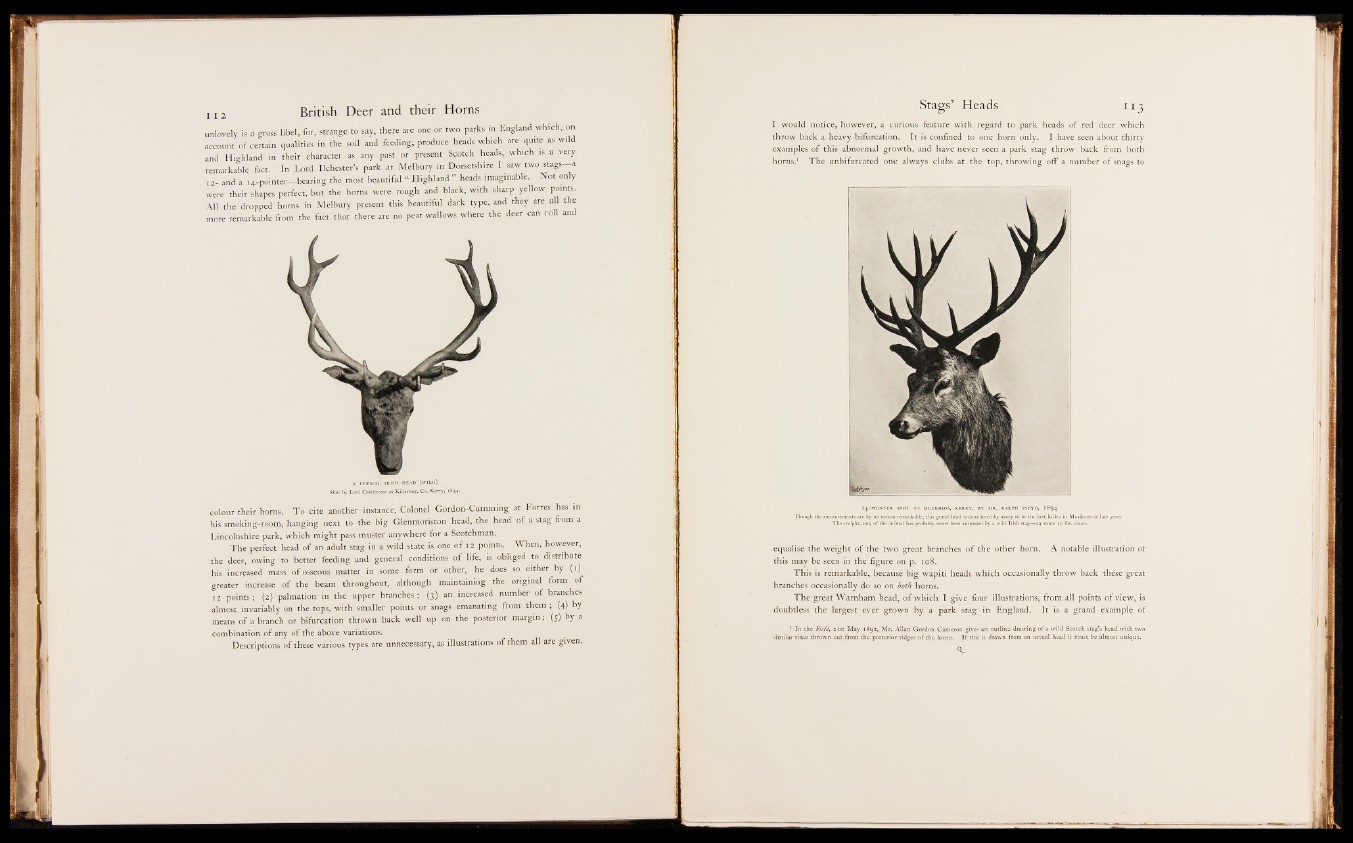
unlovely is a g r t4 '*W* for. » ang e «° “ ?• there « * one or two P*rks 1 England which, on
account o f certain qualities in the soil andJ feeding, produce heads which are quite as wild
and Highland in their character as any past or present Scotch heads,1 which is a very
remarkable feet. In Lor#Jlchester’s park at Melbury in Dorsetshire I saw two s t a g f j j l
12- and a 14 pointer Scaring the most lla tit ifu l “ Highland ” heads im a g in a b l e g f g in l y
were their shapes perfect, but the rough and black, withisharp yellow points.
A ll the dropped horns in Melhujgiprésent this beautiful dark type, and they are all the
more remarkable from theUfct that there are n»|)eat wallows where the rdE and
colour t f c r horns. T o cite another instance, Colonel Gordon-Oumming a t B ^ e s ha jgn
his, smoking-room, hanging next to the b | | f Glen|j|riston head, .the head of a stag g n i a
Lincolnshire park, which might pass muster anywhere for a Scotchman.
The perfect head o f an adult stag in a wild state is * § p > f J2 points. When, however,
the deer, owing to better feeding an d® n e ra lW o n d itift Of life, i|y |b lig e i jto di#r|h:u*c,
hlifncreased mass o f j^ t i f s matter in some form or other, he does so either by (i)
greater »in'cifease .of the beam throughout, although maintaining the original form of
12 points ; (i2| palmation in the upper branches , (3) an increased number :#l branches
almost invariably on the tops, with smaller points or snags emanating .from them ; (4) by
means of a branch or bifurcation thrown baeif well up on the posteriof‘'marg in , ('f) sby a
combination o f any o f the above v a r ia tion s '^ ., 'Y
Descriptions o f these various types are unnecessary, as illustrations o f them all are given.
I would notice, however, a curious feature with regard to park heads o f red deer which
throw back a heavy bifurcation. It is confined to one horn only. I have seen about thirty
examples of this abnormal growth, and have never seen a park stag throw back from both
horns.1 The unbifurcated one always clubs at the top, throwing off a number o f snags to
14-POINTER SHOT AT MUCKROSS, KERRY, BY MR. RALPH SNEYD, 1 8 9 4
Though the measurements are by no means remarkable, this grand head is considered by many to be the best killed in Muckross of late years.
The weight,, too,'of the animal has probably never been surpassed by-a wild. Irish stag—29 stone 10Tbs. clean.
equalise the weight o f the two great branches o f the other horn. A notable illustration ot
this may be seen in the figure on p. 108.
This is remarkable, because big wapiti heads which occasionally throw back these great
branches occasionally do so on both horns.
The great Warnham head, o f which I give four illustrations, from all points o f view, is
doubtless the largest ever grown by a park stag in England. It is a grand example of
1 In the Field, 21st May 1892, Mr. Allan Gordon Cameron gives an outline drawing of a wild Scotch stag’s head with two
similar tines thrown out from the posterior ridges of the horns. I f this is drawn from an actual head it must be almost unique.
<?L